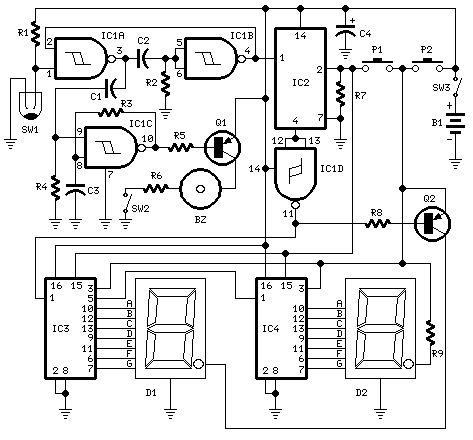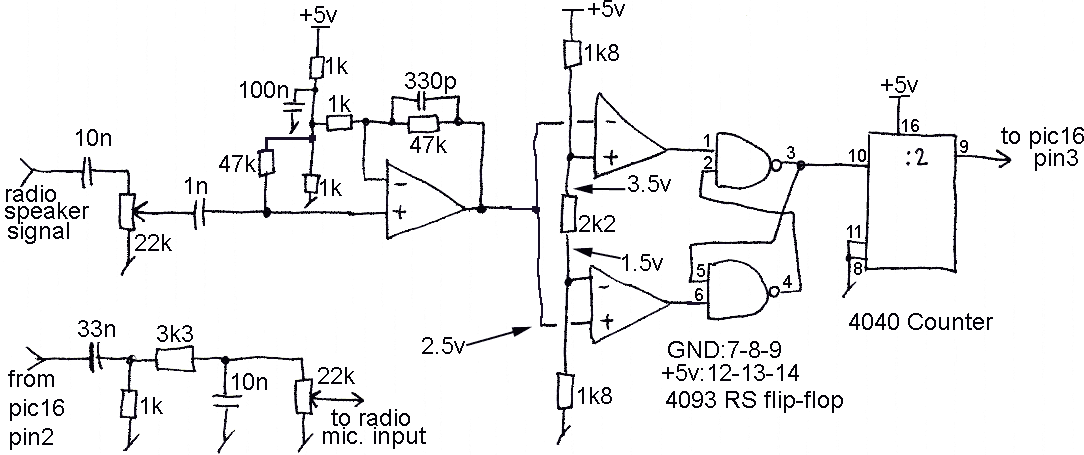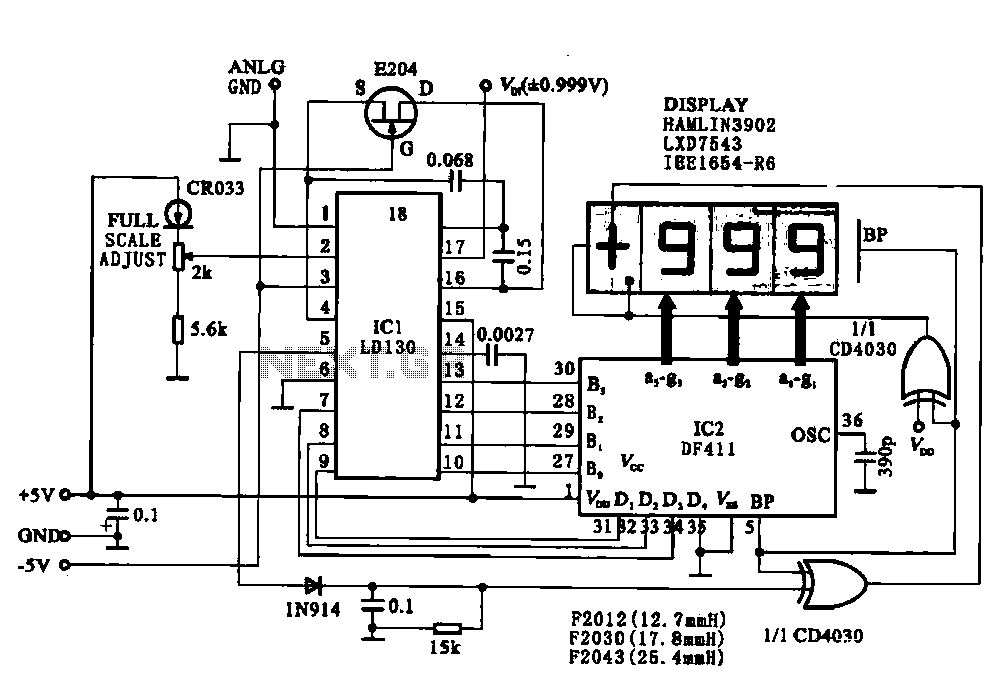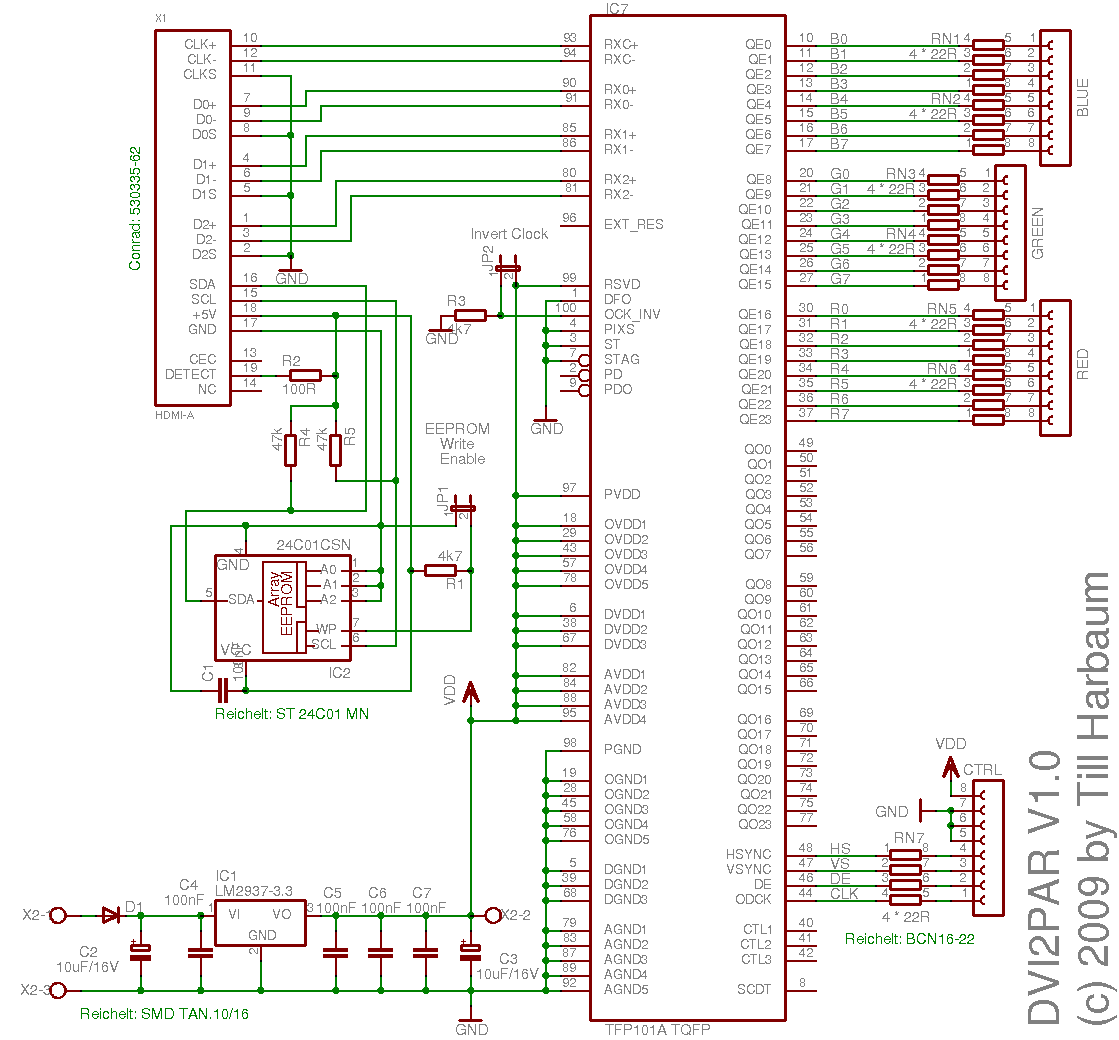
Digital Step-Km Counter

This circuit measures the distance covered during a walk. The hardware is housed in a small box that can be slipped into a pants pocket, and the display is arranged as follows: the leftmost display (D2) represents kilometers (0 to 9 Km) with its dot always illuminated to separate kilometers from hectometers. The rightmost display (D1) indicates hundreds of meters, with its dot lighting up after every 50 meters of walking. A beeper, which can be excluded, signals each count unit, occurring every two steps. A standard step is approximated to span about 78 centimeters, meaning the LED indicating 50 meters lights up after 64 steps or 32 operations of the mercury switch. The display shows 100 meters after 128 steps, and so forth. To conserve battery, the display only lights up when requested by pressing P2. Accidental resets of the counters are prevented, as both pushbuttons must be pressed simultaneously to reset the circuit. While this is not a precision measuring device, its degree of approximation has been deemed acceptable for this type of application. Proper placement and the angle of the mercury switch within the box are critical. IC1A and IC1B form a monostable multivibrator that mitigates excessive bouncing of the mercury switch, resulting in a clean square pulse entering IC2, which divides the pulse by 64. Q2 activates the dot on D1 after every 32 counts registered by IC2. IC3 and IC4 each divide the count by 10 and drive the displays. P1 is used to reset the counters, and P2 activates the displays. IC1C generates an audio frequency square wave that is briefly enabled at each monostable count. Q1 drives the piezo sounder, while SW2 allows for the beep to be disabled. This circuit is primarily designed for walking, and extra caution is advised with the placement of the mercury switch for jogging to avoid unintended counts.
The circuit operates based on a simple yet effective mechanism for distance measurement while walking. The integration of a mercury switch allows for the detection of movement, translating physical steps into electrical signals. The choice of a monostable multivibrator configuration (IC1A and IC1B) is crucial in ensuring that any mechanical bouncing from the mercury switch does not lead to erroneous counts. This is particularly important in mobile applications where vibrations can occur.
The use of a pulse divider (IC2) to manage the count further enhances the accuracy of the measurement by translating the number of detected steps into a user-friendly display format. The division by 64 means that for every 64 detected pulses, one unit of distance (50 meters) is indicated on the display, thereby simplifying the user's understanding of the distance covered.
The design also incorporates energy-saving features, such as the display activation upon request, which is essential for portable devices. The dual pushbutton reset mechanism adds a layer of protection against accidental resets, ensuring that the user’s data remains intact during operation.
The audio feedback via the piezo sounder (driven by Q1) provides an auditory cue for each counted unit, enhancing user interaction with the device. The option to disable this feature (via SW2) allows for customization based on user preference, making the device versatile for different environments.
In summary, this circuit represents a practical solution for tracking walking distances, with careful consideration given to user interface, power management, and accuracy of measurement. The overall design reflects a well-thought-out approach to creating a functional and user-friendly electronic device for fitness tracking.This circuit measures the distance covered during a walk. Hardware is located in a small box slipped in pants` pocket and the display is conceived in the following manner: the leftmost display D2 (the most significant digit) shows 0 to 9 Km. and its dot is always on to separate Km. from hm. The rightmost display D1 (the least significant digit) sh ows hundreds meters and its dot lights after every 50 meters of walking. A beeper (excludable), signals each count unit, which occurs every two steps. A normal step is calculated to span approx. 78 centimeters, thus the LED signaling 50 meters lights after 64 steps or 32 mercury switch`s operations, the display indicates 100 meters after 128 steps and so on. For low battery consumption the display lights only on request, pushing P2. Accidental reset of the counters is avoided because to reset the circuit both pushbuttons must be operated together.
Obviously this is not a precision meter, but its approximation`s degree was found good for this kind of device. In any case, the most critical thing to do is placement and sloping degree of the mercury switch inside the box.
IC1A & IC1B form a monostable multivibrator providing some degree of freedom from excessive bouncing of the mercury switch. Therefore a clean square pulse enters IC2 that divide by 64. Q2 lights the dot of D1 every 32 pulses counted by IC2. IC3 & IC4 divide by 10 each and drive the displays. P1 resets the counters and P2 enables the displays. IC1C generates an audio frequency square wave that is enabled for a short time at each monostable count.
Q1 drives the piezo sounder and SW2 let you disable the beep. * This circuit is primarily intended for walking purposes. For jogging, further great care must be used with mercury switch placement to avoid undesired counts. 🔗 External reference
The circuit operates based on a simple yet effective mechanism for distance measurement while walking. The integration of a mercury switch allows for the detection of movement, translating physical steps into electrical signals. The choice of a monostable multivibrator configuration (IC1A and IC1B) is crucial in ensuring that any mechanical bouncing from the mercury switch does not lead to erroneous counts. This is particularly important in mobile applications where vibrations can occur.
The use of a pulse divider (IC2) to manage the count further enhances the accuracy of the measurement by translating the number of detected steps into a user-friendly display format. The division by 64 means that for every 64 detected pulses, one unit of distance (50 meters) is indicated on the display, thereby simplifying the user's understanding of the distance covered.
The design also incorporates energy-saving features, such as the display activation upon request, which is essential for portable devices. The dual pushbutton reset mechanism adds a layer of protection against accidental resets, ensuring that the user’s data remains intact during operation.
The audio feedback via the piezo sounder (driven by Q1) provides an auditory cue for each counted unit, enhancing user interaction with the device. The option to disable this feature (via SW2) allows for customization based on user preference, making the device versatile for different environments.
In summary, this circuit represents a practical solution for tracking walking distances, with careful consideration given to user interface, power management, and accuracy of measurement. The overall design reflects a well-thought-out approach to creating a functional and user-friendly electronic device for fitness tracking.This circuit measures the distance covered during a walk. Hardware is located in a small box slipped in pants` pocket and the display is conceived in the following manner: the leftmost display D2 (the most significant digit) shows 0 to 9 Km. and its dot is always on to separate Km. from hm. The rightmost display D1 (the least significant digit) sh ows hundreds meters and its dot lights after every 50 meters of walking. A beeper (excludable), signals each count unit, which occurs every two steps. A normal step is calculated to span approx. 78 centimeters, thus the LED signaling 50 meters lights after 64 steps or 32 mercury switch`s operations, the display indicates 100 meters after 128 steps and so on. For low battery consumption the display lights only on request, pushing P2. Accidental reset of the counters is avoided because to reset the circuit both pushbuttons must be operated together.
Obviously this is not a precision meter, but its approximation`s degree was found good for this kind of device. In any case, the most critical thing to do is placement and sloping degree of the mercury switch inside the box.
IC1A & IC1B form a monostable multivibrator providing some degree of freedom from excessive bouncing of the mercury switch. Therefore a clean square pulse enters IC2 that divide by 64. Q2 lights the dot of D1 every 32 pulses counted by IC2. IC3 & IC4 divide by 10 each and drive the displays. P1 resets the counters and P2 enables the displays. IC1C generates an audio frequency square wave that is enabled for a short time at each monostable count.
Q1 drives the piezo sounder and SW2 let you disable the beep. * This circuit is primarily intended for walking purposes. For jogging, further great care must be used with mercury switch placement to avoid undesired counts. 🔗 External reference





